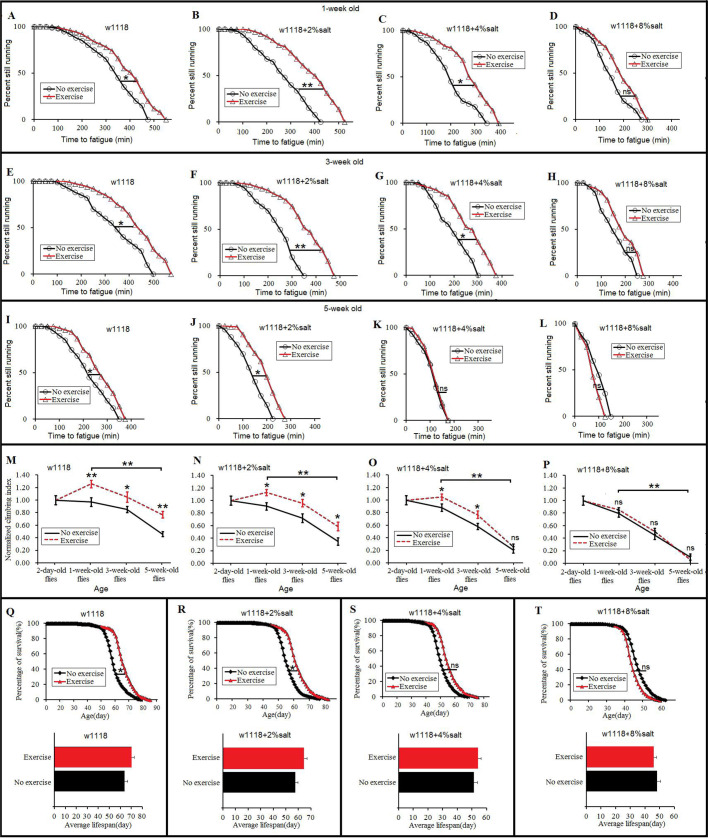Fig. 2.
The effect of exercise training on climbing capacity and mortality in HSD and aging flies. (A). Time to fatigue of 1-week-old and w1118 flies. (B) Time to fatigue of 1-week-old and 2%-SD flies. (C) Time to fatigue of 1-week-old and 4%-SD flies. (D) Time to fatigue of 1-week-old and 8%-SD flies. (E) Time to fatigue of 3-week-old and w1118 flies. (F) Time to fatigue of 3-week-old and 2%-SD flies. (G) Time to fatigue of 3-week-old and 4%-SD flies. (H) Time to fatigue of 3-week-old and 8%-SD flies. (I) Time to fatigue of 5-week-old and w1118 flies. (J) Time to fatigue of 5-week-old and 2%-SD flies. (K) Time to fatigue of 5-week-old and 4%-SD flies. (L) Time to fatigue of 5-week-old and 8%-SD flies. (M) The climbing index in w1118 flies. (N) The climbing index in 2%-SD flies. (O) The climbing index in 4%-SD flies. (P) The climbing index in 8%-SD flies. (Q) The curves of survival and the average lifespan of w1118 flies. (R) The curves of survival and the average lifespan of 2%-salt-diet flies. (S) The curves of survival and the average lifespan of 4%-SD flies. (T) The curves of survival and the average lifespan of 8%-SD flies. Using a non-parametric followed by a log-rank test for analyze survival and time to fatigue. A two-way ANOVA was used to analyze the effects of exercise and aging on climbing index of ‘no exercise’ and ‘exercise’ flies. Data are represented as means±s.e.m. *P<0.05; **P<0.01.

